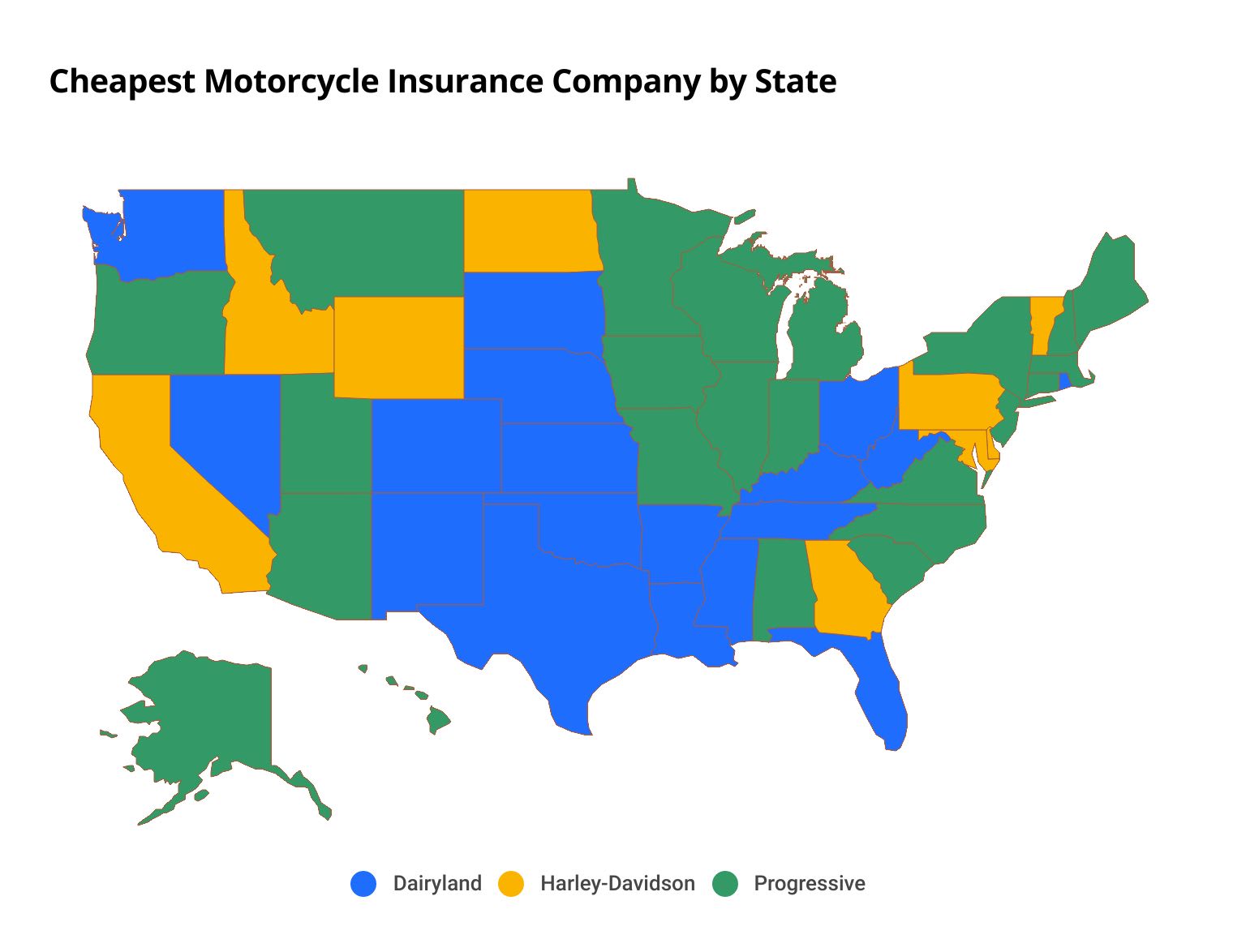Does Medicare Cover Colonoscopy Procedures?
Medicare covers routine colonoscopy screenings at 100% and diagnostic colonoscopies at 80%. What you pay depends on your health history and... Read More
Find Cheap Motorcycle Insurance Quotes in Your Area

Understand how motorcycle insurance can protect you and your ride.
Collision coverage
Collision coverage pays for damage to your bike if you hit another vehicle or object.
Comprehensive coverage
Comprehensive coverage pays to fix or replace your bike after vandalism, theft or damage by an "act of God," like hail.
Bodily injury liability
Bodily injury protection pays for the medical bills of other drivers and passengers if you cause an accident.
Property damage liability
Property damage liability covers any damage you cause to someone else's vehicle or property.
Find the best motorcycle insurance in your state.

The average cost of motorcycle insurance is $33 per month, or $399 per year, for full coverage. Three main factors affect rates: where you live, the amount of coverage you need and your riding history.
The cheapest motorcycle insurance companies are typically Dairyland, Progressive and Harley-Davidson.
However, rates vary by state. So the cheapest company near you could differ from the best option nationally. That's why comparing quotes from multiple companies is important when shopping for motorcycle insurance.
No single motorcycle insurance company is best for every rider. Major companies like Progressive and Geico offer standard motorcycle insurance, with discounts for bundling your auto and homeowners insurance. On the other hand, specialty companies like Dairyland and Harley-Davidson provide more extensive coverage to dedicated riders.
The best way to find cheap motorcycle insurance is by comparing quotes from multiple companies. You should also look for discounts. Many companies offer savings for bundling your motorcycle and auto insurance, making automatic payments or taking a motorcycle safety course.
You can get the cheapest motorcycle insurance rates by buying the minimum coverage required in your state. Most states only require a small amount of liability coverage for bodily injury and property damage. However, you won't have any coverage for your bike if you cause a crash. This may not be the best choice if you can't afford to replace your bike after an accident.
Every state has its own laws, but it's generally harder to insure your bike if you don't have a valid motorcycle license or endorsement. Most insurance companies require your license info. Companies that don't may treat you as a riskier customer and charge you more for coverage.
Medicare covers routine colonoscopy screenings at 100% and diagnostic colonoscopies at 80%. What you pay depends on your health history and... Read More
32% of respondents say money is their biggest source of stress right now, up from 22% last... Read More
To find the best plan for you, compare the coverage and costs for different Medicare Supplement plans.... Read More
It costs $300 per month, on average, to insure a Mazda with full coverage. But some models, like the popular CX-5 and CX-30 crossover SUVs,... Read More
Medicare Advantage plans with prescription drug coverage cost an average of $28 per month. The average limit of what you'll pay for care in... Read More
Medicare taxes only pay for 34% of the Medicare program, while general federal revenues pay for 46%. Learn how Medicare funding changes... Read More
The average car insurance cost for a Jaguar is $251 per month for full coverage. Jaguar drivers can find the cheapest rates from Geico and... Read More
The Medicare donut hole was a part of your coverage when you paid more for your prescription drugs. The donut hole closed in... Read More
Idaho sees biggest increase in fatality rate per mile traveled, while Nebraska sees biggest... Read More
To find the average cost of motorcycle insurance and the cheapest companies, ValuePenguin collected quotes across all 50 states in the U.S. Rates are for a 45-year-old single man who owns a 2018 Honda CMX500 Rebel.
Quotes are for a full coverage policy, which includes higher liability limits than state requirements along with comprehensive and collision coverage.